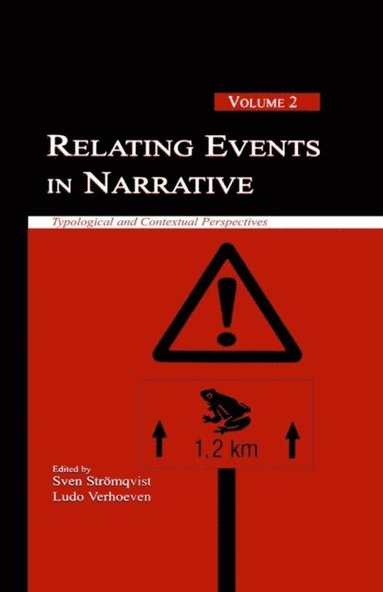
Fler böcker inom
- Format
- E-bok
- Filformat
-
PDF med LCP-kryptering (0.0 MB)
Om LCP-krypteringPDF-böcker lämpar sig inte för läsning på små skärmar, t ex mobiler. - Nedladdning
- Kan laddas ned under 24 månader, dock max 6 gånger.
- Språk
- Engelska
- Antal sidor
- 622
- Utgivningsdatum
- 2004-02-13
- Förlag
- Taylor & Francis
- ISBN
- 9781135621063
Relating Events in Narrative, Volume 2 E-bok
Typological and Contextual Perspectives
E-bok (PDF, LCP),
Engelska, 2004-02-13
Finns även som
Kundrecensioner
Har du läst boken?
Sätt ditt betyg »
Fler böcker av författarna
-
Literacy Development in A Multilingual Context
Aydin Y Durgunoglu, Ludo Verhoeven, Aydin Y Durgunoglu
-
Literacy and Motivation
Ludo Verhoeven, Catherine E Snow
-
Developmental Dyslexia across Languages and Writing Systems
Ludo Verhoeven, Charles Perfetti, Kenneth Pugh, Ludo Verhoeven, Charles Perfetti
-
Classification of Developmental Language Disorders
Ludo Verhoeven, Hans Van Balkom, Hans Van Balkom, Hans Van Balkom
Du kanske gillar
-
Play Along
Liz Tomforde
Häftad -
Releasing 10
Chloe Walsh
Häftad -
All Fours
Miranda July
Häftad -
Binding 13
Chloe Walsh
Häftad -
Redeeming 6
Chloe Walsh
Häftad -
Rewind It Back
Liz Tomforde
Häftad -
Caught Up
Navessa Allen
Häftad -
Saving 6
Chloe Walsh
Häftad -
Onyx Storm
Rebecca Yarros
Häftad
